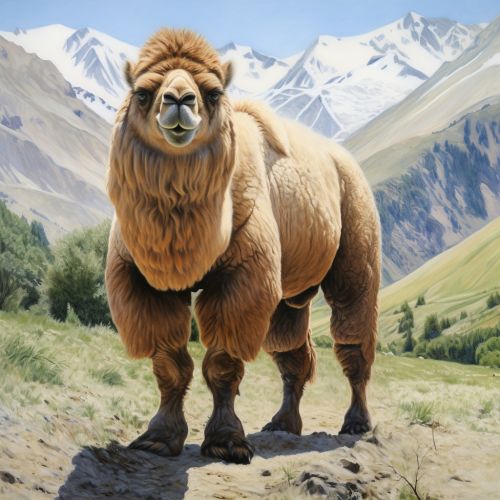Wild Bactrian Camel
Taxonomy and Evolution
The Wild Bactrian Camel (Camelus bactrianus ferus) is a distinct species of camel native to the arid regions of Central Asia. It is one of the two surviving species of camel, the other being the Dromedary camel, which is a single-humped species found primarily in the Middle East and North Africa.


The Wild Bactrian Camel is a remnant of an ancient lineage that diverged from domestic Bactrian camels around 1.1 million years ago. Genetic studies have confirmed this divergence, revealing significant genetic differences between the two populations. This makes the Wild Bactrian Camel a unique species, separate from the domesticated Bactrian camel (Camelus bactrianus).
Physical Characteristics
The Wild Bactrian Camel is known for its distinctive double humps, which are used to store fat that can be converted into water and energy when resources are scarce. The humps give the camel its ability to endure long periods without water, a crucial adaptation to its harsh desert environment.
The Wild Bactrian Camel has a robust body, with a height of 1.8 to 2 meters at the shoulder and a length of 2.25 to 3.5 meters from head to tail. It has a dense coat that varies in color from dark brown to sandy beige, providing both insulation from the cold winters and protection from the intense summer heat.
Habitat and Distribution
The Wild Bactrian Camel is found in some of the most inhospitable environments on earth, including the Gobi Desert in Mongolia and the Taklamakan Desert in China's Xinjiang Province. These regions are characterized by extreme temperatures, scarce vegetation, and limited water sources.
Despite the harsh conditions, the Wild Bactrian Camel has adapted to thrive in these environments. They are able to consume snow as a water source during the winter months and can feed on a variety of plants, including those that are toxic to other animals.
Behavior and Ecology
Wild Bactrian Camels are social animals, typically found in groups of 6 to 20 individuals. These groups, or herds, are usually composed of one dominant male, several females, and their offspring.
The Wild Bactrian Camel has a lifespan of up to 40 years in the wild. Females reach sexual maturity at around 5 years of age, while males mature at around 3 years. The gestation period is approximately 13 months, with usually one calf being born.
Conservation Status
The Wild Bactrian Camel is currently listed as Critically Endangered on the IUCN Red List of Threatened Species. The primary threats to the species are habitat loss due to mining and industrial development, hunting, and hybridization with domestic Bactrian camels.
Conservation efforts are underway to protect the remaining populations of Wild Bactrian Camels. These include the establishment of protected areas in their native habitats and captive breeding programs to increase their numbers.
